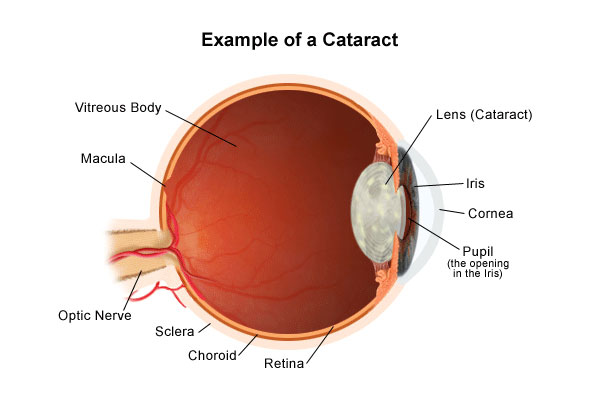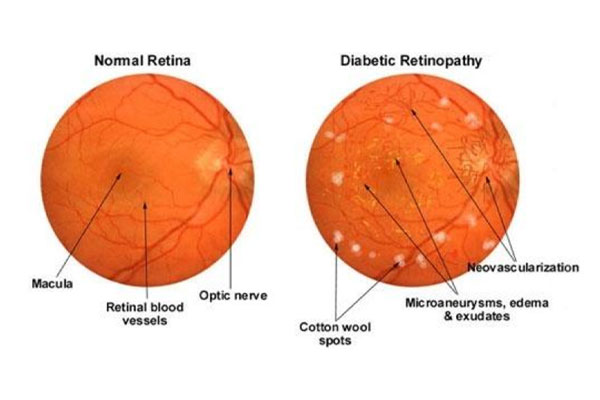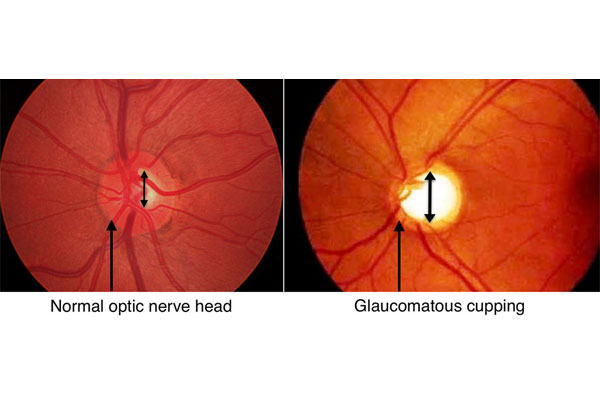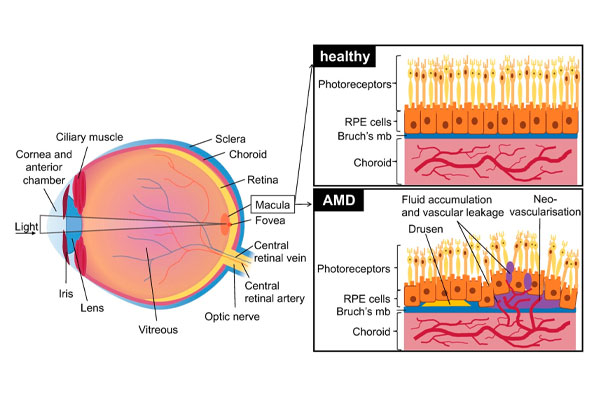
Cataracts
“My eyes aren’t what they used to be” is a statement commonly made by people as they grow older. Often, this change in vision is due to the clouding of the once clear lens in your eye, also called cataract formation.

Diabetic Retinopathy
Diabetic retinopathy is a complication of the eyes that can develop if you have type 1 or type 2 diabetes. It is caused by damage to the blood vessels of the retina. Often there are no symptoms in the early stages of diabetic eye disease, that is why it is so important to have a dilated comprehensive eye exam.

Dry Eye
Dry eye syndrome refers to a breakdown in the quality and/or quantity of tears to moisten, cleanse and protect the eyes. Symptoms and signs of dry eye include; sandy, gritty feeling, burning sensation, sensitivity to light, redness, excessive tearing and inconsistent blurry vision.

Glaucoma
Often referred to as “the silent thief of sight”, glaucoma is a disease where the retinal nerve fiber layer is damaged (either by high intraocular pressure or vascular non-perfusion) leading to peripheral vision loss and eventual blindness.

Macular Degeneration
It is the leading cause of severe permanent vision loss in people over age 60. Macular degeneration is a chronic progressive disease that gradually destroys sharp central vision due to the deterioration of the macula, the small central portion of the retina.

Plaquenil Toxicity Screening
Hydroxychloroquine (plaquenil) is a drug that is commonly prescribed to moderate the expression of rheumatoid arthritis and systemic lupus erythematosus. On rare occasions, and usually after many years, Plaquenil can damage the central portion of the retina, the macula, and affect the . . .
